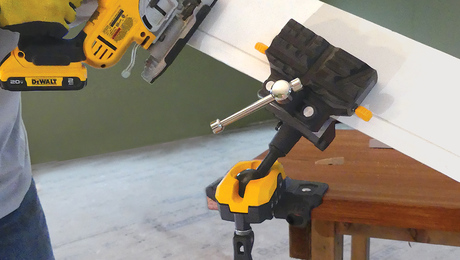Using Circuit Breaker as on/off switch for heater
I just bought a Fahrenheat 5000W heater for an out-building that is hardwired to a 30amp circuit. It does not have an on/off switch but it does have a thermostat. However, the minimum setting is 45 degrees and I want to keep the heater off when I’m not in the building. Is there any problem with using the circuit breaker to turn the unit on/off or is it necessary to add an inline 30amp switch to the circuit.
Thanks,
Lyptus



















Replies
I don't think there is any problem using the breaker as a switch. I'd try to have the heater not running when I flipped the breaker off to preserve the contacts in the breaker. May or may not make a difference, but it's good practice.
'Round here.....
.......you would have to have a switch at the unit.
You might be able to convince an inspector that the breaker was the "service disconnect" provided it was in the "same room and in sight", but I doubt it.
Jim
If you were constantly switching it on and off, the (presumably standard) breaker would eventually wear out. But if you at most switch it on/off once a day then the breaker life shouldn't be too adversely affected.
You might want to consider exhanging the thermostat for one with an "off" setting, though.
It's possible with the right breaker...
A circuit breaker can be used as a switch if it's designed to be used that way. Such breakers are designated "SWD" , or "switch duty."
The issue is that opening or closing a set of contacts (whether in a switch or in a breaker) under load causes an arc. The contacts in a switch or a SWD breaker are designed to handle the small arc that occurs every time the contacts make or break.
Also the mechanism that moves the contacts in a switch or SWD breaker may be designed to move the contacts apart faster, causing the arc to stop sooner. This depends on the voltage rating and amperage rating of the switch or breaker.
IF you use a breaker that isn't an SWD type, the breaker may fail. It may fail to close (turn on), or more dangerously, it may fail to open, because the contacts have arc-welded themselves together.
A little knowledge is a dangerous thing.
Cliff
Been using some breakers for switches for over 45 years, no problem yet.
Have even used discarded stabloc and zinsco as switches - they work great as switches, they just dont always work as breakers so get used as switches round here <G>
Hahaha... Junkhound +
Hahaha...
Junkhound + Cliff P. = opposite ends of the spectrum.
Each with their merits, mind you.
But if you're into safety, and don't have empirical and theoretical knowlege of JH, not to mention the cajones, I would stick with Cliff's very sage advice. ;-)
Don't all major pieces of equipment require by code a disconnect w/in sight of the unit ... e.g. circuit disconnect box w/ knife switch. They're cheap, so install it and be done w/ it.
>>>Don't all major pieces of
>>>Don't all major pieces of equipment require by code a disconnect w/in sight of the unit
Don't think so, an electric range is a good example.
Like you say, though, they're pretty cheap an easy to add.
The tail is a disconnect on corded appliances
Per the International Residential Code, the cord and plug function as the required manual disconnect on a range, drier, and other appliances designed for cord connection. And, you can't really get to the parts where there are exposed wires, untill you pull them out, so this works pretty well.
For a hard wired heating appliance the IRC requirement varies depending on whether the unit has a motor. But in all cases, the disconnect must be in sight of the unit, and include provisions for a positive lockout device. Plus if there is a manufacturer required overcurrent device, (read that circuit breaker), it is to be installed after the lockout device.
A locking breaker cabinet is not sufficient, because you should to be able to see the lockout status from the device. So unless a breaker housing can be found with a lockout device, a breaker by itself doesn't meet code. There might be something similar to a switch guard, that would work on a breaker. I just don't remember seeing one.
Some disconnect / lockout boxes, do have a space for the required breaker after the disconnect. So you don't have to install two boxes.
My garage/shop, has a disconnect inline before the sub-panel in the garage. So, I just shut everything down when I leave, and if the kids are visiting, I lock it out.
Interesting... being in Canada, I'm not covered by the IRC (in spite of it's dubious title of "International"...always wondered about that).. but I digress.)
Is this a fairly recent rule? Makes me wonder about the days of hard-wired ranges. Do water heaters need a disconnect or is the motor the determining factor?
Yes you can, and no you may not.
A switch rated breaker would work.
However, the IRC requires a lockable, mechanical disonnect, in site of the heating device, and before any manufacturer required overcurrent protection devices.
So there has to be a lockable mechanical disconnect in every room with an electric baseboard heater? And then a breaker somewhere between that and the baseboard??